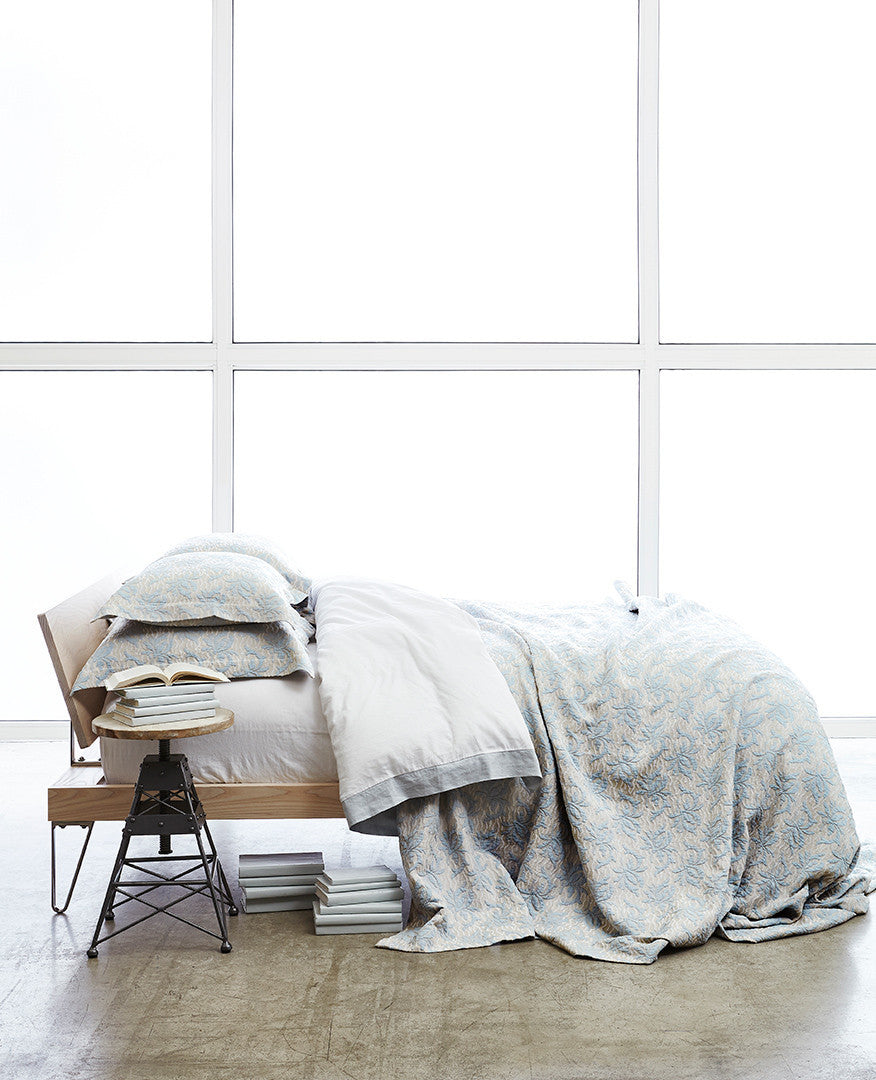
Is there anything more universally worshipped than our beds? Linda Evangelista famously wouldn't get out of hers for less than $10,000. John Lennon and Yoko Ono spent their week-long honeymoon in theirs, protesting for peace. We emblazon our love for our beds across our social media feeds and clothing, branding our generation as those who will Namaste in Bed. However, we weren't the first culture to be obsessed with our beds. Join us on a brief trip through history to discover how the bed has evolved throughout time.
According to National Geographic, the world's oldest known mattress was recently unearthed in South Africa. Believed to be 77,000 years old, the bed was comprised of a mattress made of reeds and rushes, and a "top sheet" fashioned of greenery that researchers believed kept mosquitoes and flies at bay.
In Ancient Egypt, beds were considered to be status symbols. While the lower classes simply slept on a heap of palm bows or straw, the wealthy constructed wood platform beds that were ascended by stairs, were often curtained, and piled high with cushions for comfort.

An Ancient Egyptian carved wood headrest
Not so comfortable, however, was the Ancient Egyptians' idea of a pillow. Unlike the soft and squishy pillows that we sleep on today, archaeologists believe that people of this period slept with their heads on a raised headrest, curved, and carved of wood (although they may have covered them with a piece of linen or cloth for "comfort").

Recreation of Roman dining space, Museum of Zaragoza
In Ancient Rome, the bed was utilized as a multi-purpose reclining surface rather than just a place to sleep. Several beds, or "dining couches" were arranged around the perimeter of the home's living space, and friends and family would recline in bed while socializing, studying, and dining (the Romans would recline on their left side while eating). The location of your bed in the room, as well as your position on the bed, was emblematic of your social standing within the group.
Known as "The Age of Magnificent Beds", the Renaissance Period was the birth of the modern bedding as we know it: soft, comfortable, and clean. Simple mattresses filled with straw or hay were wrapped with sumptuous materials like velvets, brocades, and silks. Embroidered canopies and ornamental hangings became de rigueur, and the advent of the featherbed (almost exactly as we know it today) led to beds becoming extremely expensive, often willed down from generation to generation.
Although feather pillows were popular long before this time, the pillowcase was not invented until the 1500s. Art from this period portrays that people simply laid a sheet of fabric over their cushions. Portraits from this time also depict the wealthy having beds with pull-out trundles underneath for maids and personal valets, as they were on-call at all hours of the day or night.

Louis XIV's royal bedchamber at Versailles
One of the most popular historical figures with ties to the bed was Louis XIV. Reported to spend much of his day in bed, the Sun King was so obsessed that he purchased 413 beds for Versailles, and would hold royal court daily from his bed. His fondness for working from between the sheets spawned a trend of the bed as a social gathering place, and many of his subjects mimicked the King's habit of receiving guests in bed for a chat.
The 20th century brought numerous technological advances to the world of beds and mattresses, bringing us everything from the waterbed to the air mattress to foam mattresses that can be sent through the mail. We're curious... what do you think will define our society in the history of the bed? What technological changes will the future bring to our beds? We'd love to hear your thoughts. Tweet us @aulitfinelinens and let us know!




